Tools needed

The discoloration of food is mainly due to carbonization, which essentially refers to burnt-on stains. This can be beneficial for seasoned cast iron, but it's not ideal for enameled pans.
Fortunately, cleaning Dutch ovens is quite simple. You'll need a stove, water, and baking soda. A long wooden or plastic spoon can also come in handy, along with a rough sponge. However, avoid using metal or overly abrasive materials for scrubbing, as they can scratch the surface and are not recommended.
For stubborn stains, consider using Bar Keepers Friend, with the powdered version being more effective than the liquid. Additionally, a small bottle of bleach will be helpful, along with your regular dish soap and water.
Fill your Dutch oven
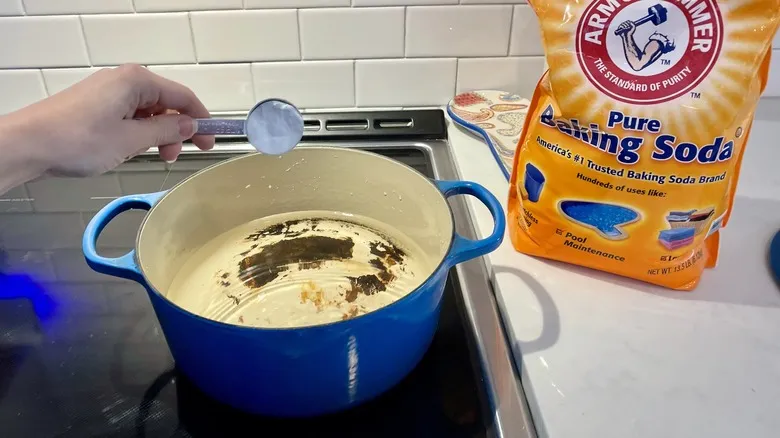
Start by filling your Dutch oven with sufficient water to submerge the stained areas. Next, position your Dutch oven on the stovetop. After it's on the burner, incorporate approximately two tablespoons of baking soda. Acting as a base, the baking soda will assist in loosening the acidic, burnt food that has adhered to the pan.
Simmer the pot
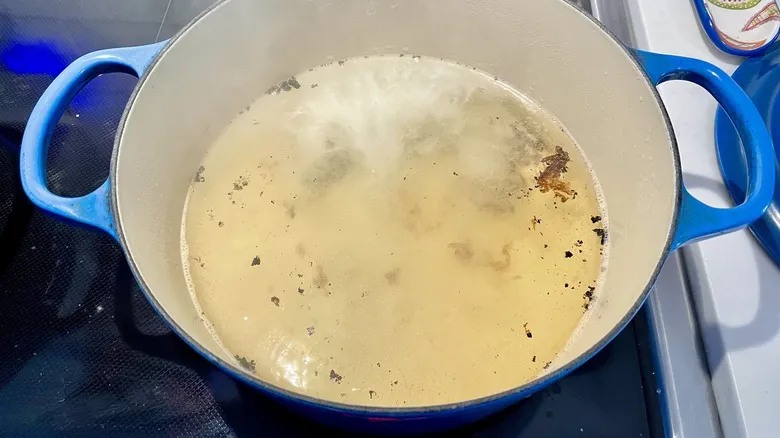
Heat the pot of water and baking soda until it reaches a boil, then let it simmer gently for approximately 8 to 10 minutes. You can do this with the lid on or off. At this stage, you might observe some of the charred bits loosening on their own without the need for scrubbing.
Scrape gently at the stains
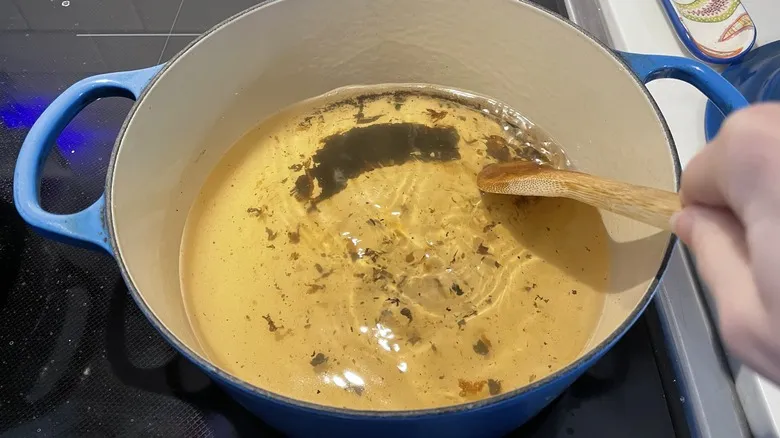
Switch off the heat. Use a wooden or plastic spoon to carefully scrape the bottom of the pan. Avoid using metal utensils, as they can damage the enamel.
The wooden spoon will assist in loosening any food that’s stuck. This technique is especially useful for removing thick, recently burned food that results from cooking at excessively high temperatures.
Drain and cool your Dutch oven
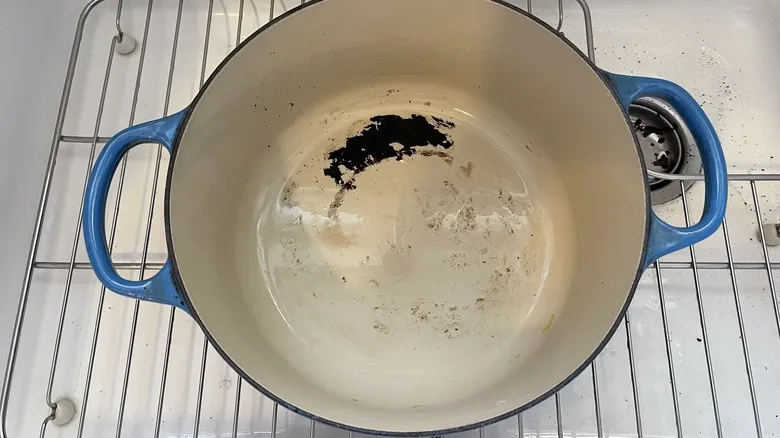
Once you've finished scraping, take your pot to the sink and drain it. Allow the pot to sit and cool until it's safe to handle. If your oven is now free of stains, you can proceed directly to the washing and drying step. If there are still stains, don’t fret; there are additional stain removal techniques available. Move on to the next step: the baking soda scrub.
Baking soda scrub
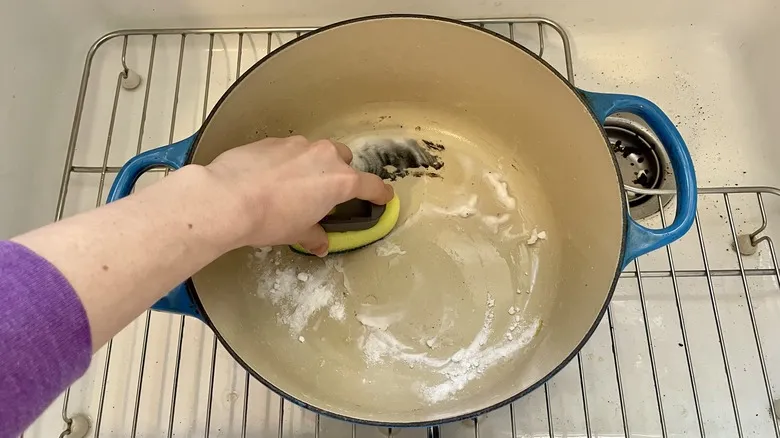
If there are any remaining stains, stay calm. Rinse the pot without drying it. Sprinkle baking soda on the stained spots. This will create a paste with the leftover water. Use the rough side of a sponge to scrub the area. It may require some effort, but this will help loosen the burnt food residue.
Turn to Bar Keepers Friend for extra stubborn stains
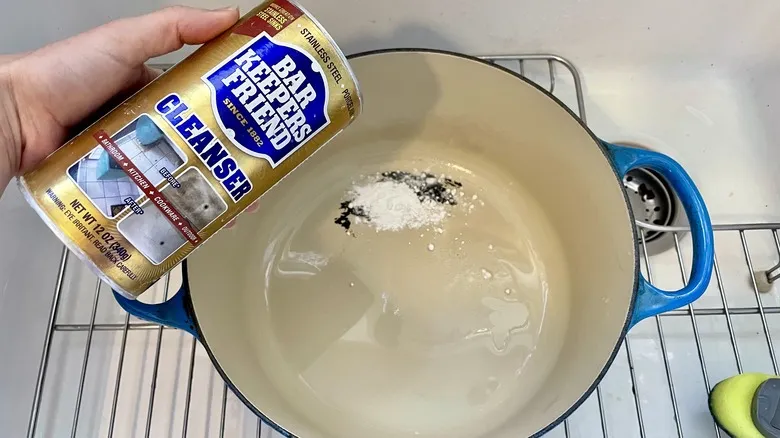
If baking soda isn't effective, it's time to reach for Bar Keepers Friend. Rinse your Dutch oven once more, then sprinkle the powdered cleaner onto the damp surface to create a paste. Scrub the mixture into the pot. This will require some effort, but you'll notice that the stubborn, burnt-on food will start to lift away.
Bleach the remains

If the other methods haven't yielded the desired results, consider using bleach. We have found it to be particularly effective for stains that have accumulated over time.
For stubborn stains that remain after thoroughly rinsing your Dutch oven, combine one part bleach with three parts water in the pot and allow it to sit for several hours or overnight. While this method is generally safe, some individuals may prefer to avoid using bleach on surfaces that come into contact with food. If that's the case, feel free to move on to the next option.
It's crucial to remember that you must thoroughly rinse away any other cleaning products before using bleach. Mixing different chemicals can lead to dangerous reactions. For instance, combining bleach with vinegar (or bleach with ammonia) produces toxic chlorine gas, which can result in severe and lasting lung damage.
Wash and dry

After you’ve successfully eliminated the stains to your liking, clean and dry your Dutch oven as you typically would. Make sure to eliminate any traces of baking soda, Bar Keepers Friend, and bleach.
Dutch oven maintenance
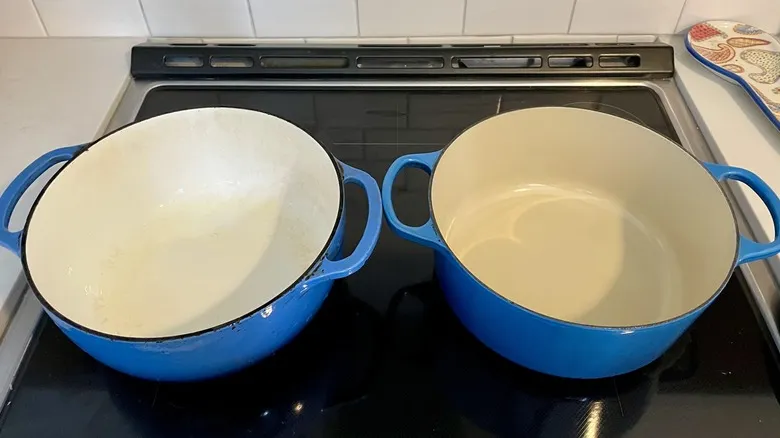
Now that you've restored your Dutch ovens to their rightful condition, it's important to maintain them properly. Handle your Dutch oven with care. While they can withstand high temperatures, sudden changes in temperature can lead to thermal shock and result in cracks. Therefore, avoid pouring ice-cold water into a hot Dutch oven.
Moreover, Dutch ovens retain heat exceptionally well. This means you don't need to set your stove to excessively high temperatures, as this can lead to burnt food and stains, putting you back where you started.
Lastly, the enamel surface can be scratched, which can reduce the lifespan of your Dutch oven. To prevent scratching, refrain from using metal cooking utensils or metal scrubbers on your Dutch oven.
Delicious Dutch oven recipes
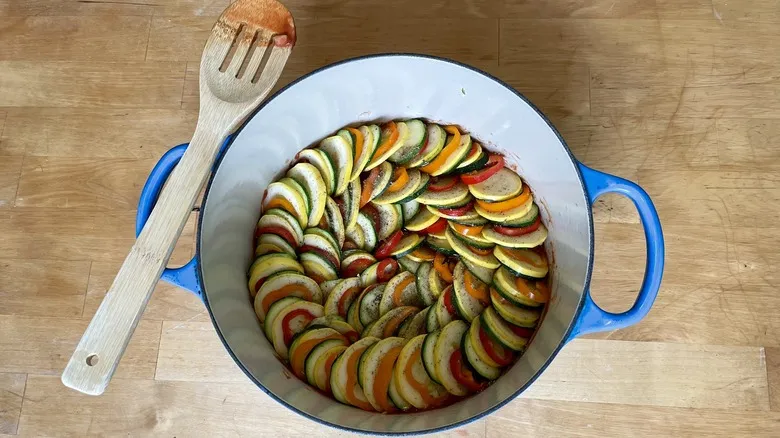
Now that your Dutch oven is back in top-notch, clean condition, why not experiment with one of these tasty recipes? A shallow Dutch oven is ideal for preparing this herb-roasted beef tenderloin. Since many Dutch ovens are enameled, you can confidently cook acidic dishes in them, like this versatile tomato sauce or the traditional pasta e fagioli.
For a comforting and filling meal, consider making chorizo and beef chili con carne. Even recipes that don’t specifically require a Dutch oven can be enhanced by using one, such as this simple ratatouille shown above.
Recommended
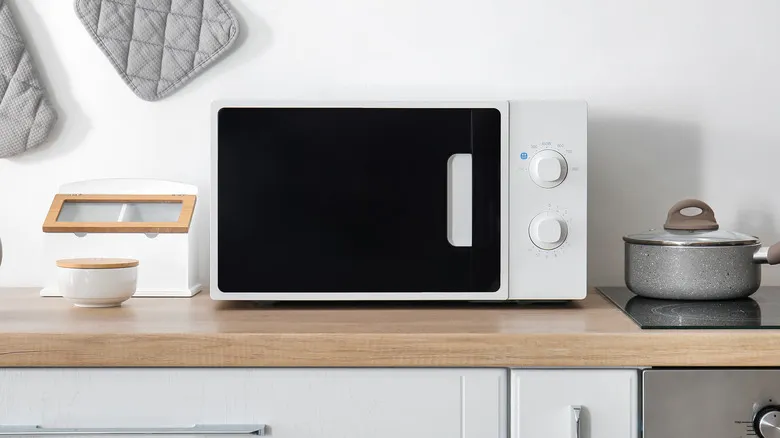
Microwaving Food With Paper Towels Is Only Safe In 2-Minute Intervals

Gordon Ramsay's Stacking Technique For Chopping Basil

The Hole In Your Pot Handle Was Made To Hold Messy Stirring Spoons
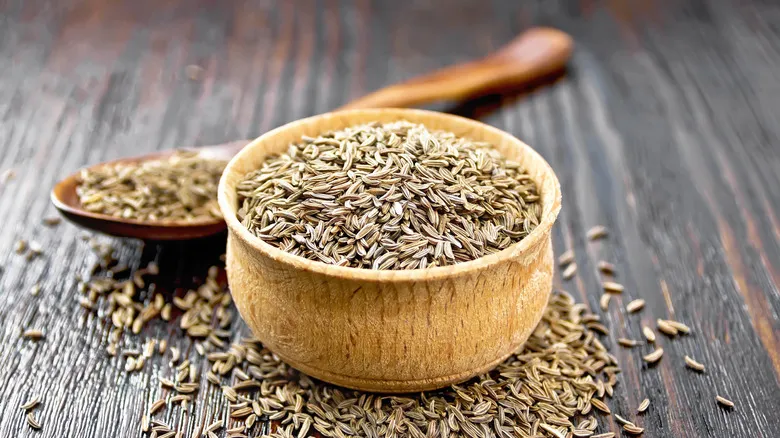
Everything You Need To Know About Cooking With Cumin
Next up

